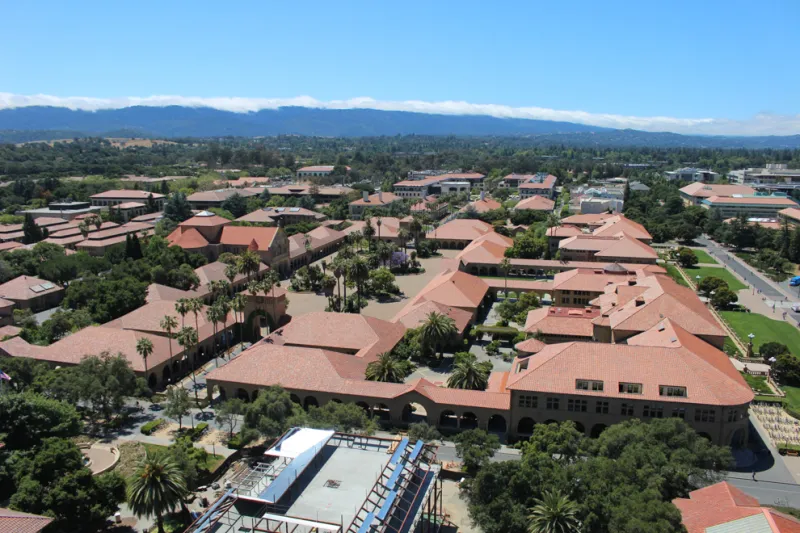Though Santa Clara County has requested that Stanford construct four times the amount of faculty and staff housing they originally intended to under the 2018 General Use Permit (GUP) application, the University maintains it cannot meet this demand without a series of modifications to the County’s conditions for the application’s approval.
If approved, the GUP would authorize development on Stanford-owned lands for the next 16 years, including the addition of 2.275 million square feet of academic facilities and 3,150 additional housing units — 2,600 for students and 550 for faculty and staff. On May 29, however, the County released its “Conditions of Approval,” for the application, one of which would require the University to construct an additional 2,172 housing units for faculty and staff. It stipulates that of the additional units, 70 percent be constructed on campus and the rest within six miles of it, and that 1,239 be offered at market rate and 993 be offered at below-market rate.
In a Tuesday letter to the County, Stanford Associate Vice President Catherine Palter wrote that the University accepts the request for 2,172 additional units, but asked that the County recognize Stanford’s existing housing projects — namely, at Escondido Village — loosen its restriction that 70 percent of additional housing be constructed on campus and reduce the number of below-market rate housing units Stanford is required to construct. Stanford hopes to satisfy the County’s request could with 1,300 units from Escondido Village Graduate Residences (EVGR), 215 units from Stanford’s Middle Plaza project in Menlo Park, and the construction of 1,307 additional workforce units on and off campus throughout the duration of the permit.
[Read Stanford’s proposed changes to the County’s Conditions of Approval here]
County Board of Supervisors President Joe Simitian told The Daily that it is too soon to say whether the County will modify its Conditions of Approval in response to the University’s requests, but that the Board of Supervisors and the Planning Commission would “review them thoroughly.”
“All that’s being asked is that any adverse impacts with respect to housing [and] traffic not be imposed on the surrounding communities,” Simitian said. “The bottom line is full mitigation.”
Stanford’s first demand is that they “receive credit” for EVGR in the housing requirement. Expected to be completed in 2020, the $1 billion project is anticipated to house 2,400 graduate students through 1,300 units who currently live off-campus, at 40 percent below-market rate after its anticipated completion in 2020.
Because Stanford began construction at Escondido Village prior to its submission of the GUP application despite being under “no regulatory obligation” to do so, according to Palter’s letter, the University asks for each apartment constructed through EVGR count for half of one of the required off-campus market rate additional units, totaling to 650 required units.
The University also requests that the County allow it to build 70 percent of the required market-rate housing units within six miles of campus, rather than build 70 percent of them on campus. Drawing from surveys it conducted of staff, Stanford contends that the majority of its workforce prefers to choose their own housing rather than have it be prescribed to them by the University.
“Many employees prefer that their employer not also serve as their landlord,” Palter wrote.
The University also cited the County’s Affordable Housing Mitigation Impact Fee Ordinance, which levies a $68.50 affordable housing fee for each square foot the University develops, in its request for the number of below-market rate units to be reduced.
Stanford’s proposed modifications also touched on transportation. In the Conditions of Approval, the County proposes an “average daily trip baseline” for the number of vehicles that enter and exit Stanford’s campus. Because this was not required under previously released Environmental Impact Report (EIR), which detailed the anticipated effects of Stanford’s expansion under the GUP, the University asks that it instead only be held to the “no net new commute trips” standard, which limits peak-hour traffic.
In addition to these demands, Stanford asks for increased flexibility in deed restrictions to allow it greater freedom within the six mile radius of campus to construct additional housing units.
Stanford’s final request is that the County does not guarantee further study and continuous mitigation of impacts on onsite parks, municipal, health and social services.
The University’s requests come after the first of three public hearings on the GUP, in the penultimate stage of the application approval process. The first hearing took place on May 29, with the release of the Conditions of Approval; the second and third will take place June 13 and 27, respectively.
Contact Julia Ingram at jmingram ‘at’ stanford.edu.
